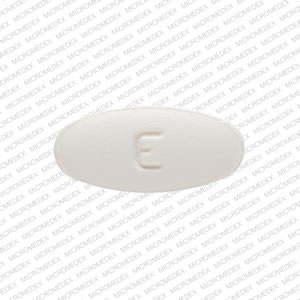Zolpidem Disease Interactions
There are 8 disease interactions with zolpidem.
- Alcohol intox
- Depression
- Drug dependence
- Liver disease
- Glaucoma
- Liver disease
- Resp depression
- Renal dysfunction
Anxiolytics/sedatives/hypnotics (applies to zolpidem) alcohol intox
Major Potential Hazard, High plausibility. Applicable conditions: Acute Alcohol Intoxication
Anxiolytic, sedative, and hypnotic agents should generally not be given to patients with acute alcohol intoxication exhibiting depressed vital signs. The central nervous system depressant effects of these agents may be additive with those of alcohol. Severe respiratory depression and death may occur. Therapy with such agents should be administered cautiously in patients who might be prone to acute alcohol intake.
Anxiolytics/sedatives/hypnotics (applies to zolpidem) depression
Major Potential Hazard, Moderate plausibility.
A variety of abnormal thinking and behavior changes have been reported to occur in association with the use of most anxiolytics, sedatives and hypnotics. Some of these changes include decreased inhibition, aggressiveness, agitation, and hallucinations. These drugs can cause or exacerbate mental depression and cause suicidal behavior and ideation. Therapy with these drugs should be administered cautiously in patients with a history of depression or other psychiatric disorders. Patients should be monitored for any changes in mood or behavior. It may be prudent to refrain from dispensing large quantities of medication to these patients.
Anxiolytics/sedatives/hypnotics (applies to zolpidem) drug dependence
Major Potential Hazard, High plausibility. Applicable conditions: Alcoholism, Drug Abuse/Dependence
Anxiolytic, sedative, and hypnotic agents have the potential to cause dependence and abuse. Tolerance as well as physical and psychological dependence can develop, particularly after prolonged use of excessive dosages, and abrupt cessation and/or a reduction in dosage may precipitate withdrawal symptoms. In patients who have developed tolerance, overdosage can still produce respiratory depression and death. Therapy with anxiolytic, sedative, and hypnotic agents should be administered cautiously and for as brief a period as possible. Addiction-prone individuals, such as those with a history of alcohol or substance abuse, should be under careful surveillance or medical supervision when treated with these agents. In addition, it may be prudent to refrain from dispensing large quantities of medication to such patients. After prolonged use or if dependency is suspected, withdrawal of medication should be undertaken gradually using a dosage-tapering schedule.
Zolpidem (applies to zolpidem) liver disease
Major Potential Hazard, High plausibility.
Zolpidem is primarily metabolized by the liver. The plasma concentrations and half-life of zolpidem have been shown to increase substantially in the presence of chronic hepatic insufficiency. Therapy with zolpidem should be administered cautiously in patients with impaired hepatic function. Since many of the drug's adverse effects may be dose-related, especially those involving the central nervous system or gastrointestinal tract, an initial dosage of 5 mg is recommended for these patients.
Anxiolytics/sedatives/hypnotics (applies to zolpidem) glaucoma
Moderate Potential Hazard, Moderate plausibility. Applicable conditions: Glaucoma/Intraocular Hypertension, Urinary Retention
Some hypnotic drugs can have an anticholinergic effect and should be used with caution in patients with glaucoma, and trouble urinating due to retention or enlarged prostate.
Anxiolytics/sedatives/hypnotics (applies to zolpidem) liver disease
Moderate Potential Hazard, Moderate plausibility.
In general, anxiolytics, sedatives and hypnotics are extensively metabolized by the liver. Their plasma clearance may be decreased and their half-life prolonged in patients with impaired hepatic function. Therapy with these drugs should be administered cautiously in patients with liver disease (some are not recommended in severe liver impairment), and the dosage should be adjusted accordingly. Laboratory testing is recommended prior and during treatment.
Anxiolytics/sedatives/hypnotics (applies to zolpidem) resp depression
Moderate Potential Hazard, Moderate plausibility. Applicable conditions: Asphyxia, Pulmonary Impairment, Respiratory Arrest
Oral anxiolytic, sedative, and hypnotic agents may cause respiratory depression and apnea when given in high dosages or following acute overdose. However, some patients may be susceptible at commonly used dosages, including the elderly, debilitated or severely ill patients, those receiving other CNS depressants, and those with limited ventilatory reserve, chronic pulmonary insufficiency or other respiratory disorders. Therapy with anxiolytic, sedative, and hypnotic agents should be administered cautiously in these patients. Appropriate monitoring and individualization of dosage are recommended.
Zolpidem (applies to zolpidem) renal dysfunction
Moderate Potential Hazard, Low plausibility.
Zolpidem is extensively metabolized by the liver and subsequently excreted in the urine, primarily as metabolites. Limited data suggest that the pharmacokinetic disposition of zolpidem is not altered in the presence of renal insufficiency or even end-stage renal disease, and that there is no accumulation of unchanged drug after repeated dosing. However, the effects of possible metabolite accumulation have not been studied. While dosage adjustments are generally not required, close monitoring is recommended in patients with impaired renal function treated with zolpidem.
Switch to professional interaction data
Zolpidem drug interactions
There are 484 drug interactions with zolpidem.
Zolpidem alcohol/food interactions
There is 1 alcohol/food interaction with zolpidem.
More about zolpidem
- zolpidem consumer information
- Check interactions
- Compare alternatives
- Pricing & coupons
- Reviews (1,062)
- Drug images
- Side effects
- Dosage information
- Patient tips
- During pregnancy
- Support group
- Drug class: miscellaneous anxiolytics, sedatives and hypnotics
- Breastfeeding
- En español
Related treatment guides
Drug Interaction Classification
| Highly clinically significant. Avoid combinations; the risk of the interaction outweighs the benefit. | |
| Moderately clinically significant. Usually avoid combinations; use it only under special circumstances. | |
| Minimally clinically significant. Minimize risk; assess risk and consider an alternative drug, take steps to circumvent the interaction risk and/or institute a monitoring plan. | |
| No interaction information available. |
See also:
Further information
Always consult your healthcare provider to ensure the information displayed on this page applies to your personal circumstances.


